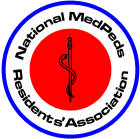All About Med+Peds (courtesy of the National Med-Peds Residents' Association)

- Med-Peds began as a combined residency training option in 1967. Since then, Med-Peds positions and programs have expanded greatly. Med-Peds recently celebrated its 40th anniversary as a combined specialty in 2007.
- Med-Peds physicians complete an integrated 4-year residency program combining two residencies and specialties - Internal Medicine and Pediatrics.
- Over 4 years, 24 months of training are completed in each specialty. Med-peds graduates qualify to take boards in both Internal Medicine and Pediatrics through the American Board of Internal Medicine (ABIM) and the American Board of Pediatrics (ABP).
- Med-Peds residents switch between Medicine & Pediatrics rotations every 3 to 6 months.
- The passing rate on both the pediatrics boards and internal medicine boards for Med-Peds graduates is comparable to categorical pediatric and internal medicine physicians.
- Med-peds physicians enjoy a breadth and depth of knowledge in both these disciplines that allows them to have the versatility to care for families and individuals in a variety of inpatient and outpatient settings from the newborn baby to the geriatric patient.
- Over 24 subspecialties and fellowships (e.g. cardiology, infectious diseases, critical care) are available in the individual fields of Internal Medicine and Pediatrics, with many graduates creating a number of combined fellowships across the nation.
- Med-Peds continues its rapid growth today with over 6000 current practitioners nationwide and 1300 Med-Peds residents.
- It is currently the largest combined specialty program available. Med-Peds residents comprise 15% of total Pediatrics residents and 8% of all Internal Medicine residents. Many U.S. Medical Schools are affiliated with Med-Peds programs.
- The top 10 reasons medical studentschose Med-Peds as a career (in order chosen):
1. Age spectrum
2. Variety/depth of training
3. Liked both medicine and pediatrics
4. Flexible career options
5. Primary care focus
6. Ability to sub-specialize
7. Role models
8. Did not want Obstetrics or Surgery
9. Transition and adolescent medicine
10. More pediatrics training
*Click here to view the excellent introduction to med-peds pamphlet where this information is taken from.
